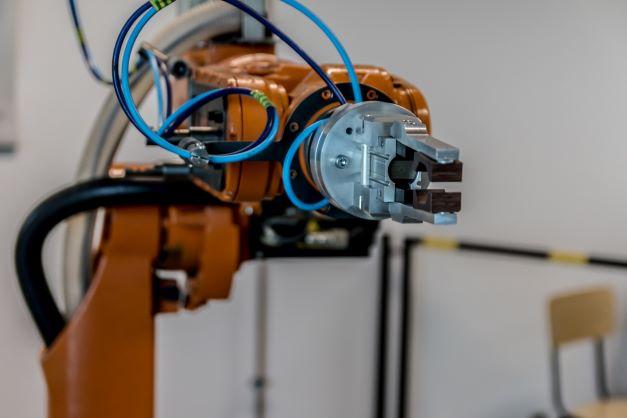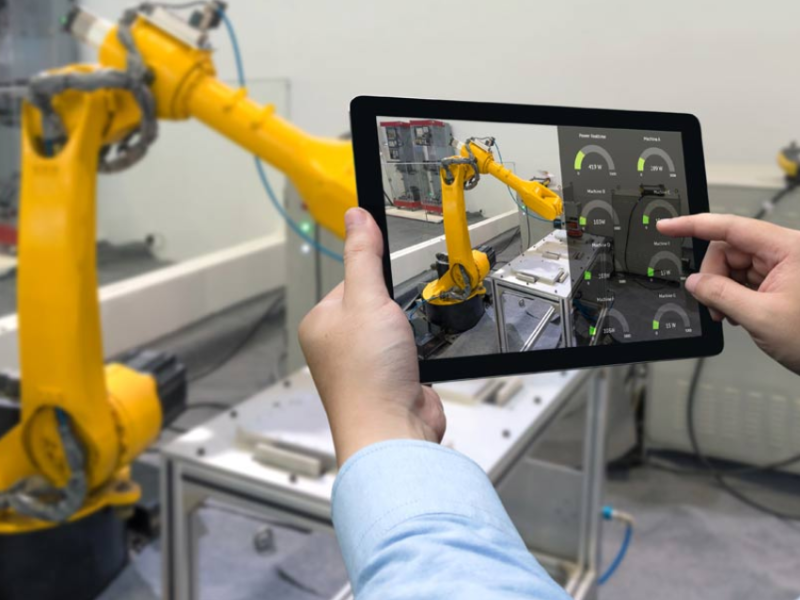"Never forget the basics,” goes the old saying. “They're the foundation of what you're capable of now.” Supply chain managers have turned their attention to integrating robotics and automation technologies to maintain competitive. Here, Chris Johnson, managing director at specialist bearing supplier SMB Bearings, explains why bearings must not be overlooked as vital components in realising the full potential of more compact, speedy and precise industrial robots.
Among manufacturers, 98 per cent interviewed in PwC’s Digital Factories 2020 report said they expect to integrate digital technologies into their manufacturing execution systems (MESs) in order to increase efficiency. Automation in warehouses is also growing more popular, to the extent that the market is set to almost double to $68 billion by 2025 according to Interact Analysis.
This automation uptake can be attributed to a number of factors including disruptions to supply chains caused by the pandemic and extreme weather, the complexities of ecommerce and labour shortages. The latter has been caused, in part, by the “Great Resignation” in the US, where employees began voluntarily resigning from their jobs en masse in early-2021 due to lack of protection against COVID-19, wage stagnation and rising costs of living.
According to the FT, “Analysts say chronic labour shortages have accelerated the uptake of automation, transforming a cost-saving exercise into a critical issue for competitiveness” as manufacturers seek to maintain revenues despite staff shortages. The article observes that “Supply chain managers now have their eyes on maturing technologies to take the pressure off their workforce”, and that automation isn’t just about return on investment, but also the continuity of business.
Gartner agrees that automation is the way forward to replace manual, time-consuming processes. In particular, it recommends hyperautomation, a trend that brings together the use of Industrial Internet of Things (IIoT) technologies like AI, sensors, machine learning and robotic process automation to automate as many business and IT processes as possible.
New models
One thing’s for sure, rather than aspiring to return to pre-pandemic ways of doing business, industry is instead migrating towards new logistical and supply chain models.
This is where robots and automation will play a crucial role. Industrial robots and automation are well-established in their ability to reduce costs, boost productivity and deliver greater efficiency and competitiveness. Each year, robots are becoming more collaborative with humans and capable of delivering the same functionality in a smaller footprint.
Robots have typically been used for monotonous handling and assembly tasks. However, it’s predicted that software and firmware platforms, and the robots to which they are connected, will become more integrated in manufacturers’ enterprise resource planning (ERP) and MESs. Meanwhile, robots are becoming more compact, speedy and performing more complex and precise tasks from production and packaging to surgical environments, as well as large-scale applications in warehouses.
Whatever the application, the improving speed, manoeuvrability and precision of robots relies on high-precision bearings. Hybrid chrome and steel bearings, ceramic bearings and slewing bearings are all common in robot applications, but thin section bearings are the option most commonly chosen by SMB Bearings’ customers.
The right bearings
The ability of robots to perform tasks with increasing precision and accuracy is largely thanks to research and development using thin section bearings — but what are they?
As the name suggests, thin section bearings are very thin and compact, available in a limited number of widths and thicknesses. For instance, SMB Bearings supplies EZO brand thin-section ball bearings as either open, shielded or sealed in SAE52100 chrome steel or 440 grade stainless steel. They are designed to withstand radial loads as well as moderate thrust loads in both directions, and offer high accuracy in a low profile design.
Thin section bearings have cross sections that don't change as bore sizes increase. There is very little difference in size between the internal and external ring, so there needs to be no change in the space requirements. These types of bearing contribute to downsizing, weight savings and reduction of torque loss in robots.
However, the thinness of these bearings also presents design challenges. For instance, if you spin the inner ring of a thin section bearing without any lubricant, and then lightly squeeze the outer ring between finger and thumb, the inner ring will stop spinning. This demonstrates the incredible flex in the device.
If the rings are not perfectly formed, even a minute discrepancy will stop the bearing running as smoothly, generating heat and noise with an increased risk of bearing failure. As a result, the manufacturing process has to be extremely precise to ensure the highest possible degree of roundness in both rings, as well as good noise levels in the bearing itself.
As an example, robots in operating theatres, some of them using EZO brand bearings, are now capable of performing complicated surgery with a dramatically reduced impact on patients, improving recovery time. Other applications where the bearings are used include in robotic exoskeletons that are enabling warehouse workers to lift heavier weights, and for social care workers to lift people with reduced risk of injury.
Grasp any object
The UK’s Shadow Robot Company, a designer and manufacturer of state-of-the-art anthropomorphic robot hands, has years of experience in manufacturing dexterous robots that perform nimble tasks in areas like scientific research facilities. But these types of robots aren’t suitable for industrial applications, unlike its Smart Grasping System™. Designed to be robust and reliable, the system uses AI that allows it to pick up many types of objects, reducing the need for human hands in a factory. Torque sensing ensures the robot hands make the most accurate and reliable grasp of any object.
In order to work, the system needed specific bearings with very tight tolerances in dimensional accuracy. The company approached SMB Bearings, which recommended and supplied its EZO thin-type precision bearings that, importantly, are manufactured to the same shape and size. Any inconsistencies in the size of the bearings can affect the accuracy of the robot joint positions, and overall behaviour.
Shadow Robot Company’s testing and trial and error demonstrated the correct friction coefficient and its corresponding percentage grease fill, for optimum performance. The bearings gave the right levels of quality, tolerances and consistency. These properties ensure predictable and accurate friction in the bearing, which provide levels of friction that are essential to control the robot’s movements.
In the end, the customer praised the EZO thin-type precision bearings as being easy-to-install and essential to the lifespan of its robot — they even expect the bearings to outlive most other parts of its Smart Grasping System. All bearings were supplied to the customer’s exact specification.
Smart technologies and Industry 4.0 are high on the agenda for every manufacturer and supply chain manager, right now. While bearings may not be at the forefront of people’s minds as smart technology, they are nevertheless critical components that are essential to the optimal performance of many automation technologies, particularly robots.
After all, if bearings enable the reliability and robustness of smart systems such as the Smart Grasping System, then it’s vital that manufacturers “never forget the basics” as the foundation for getting the most from Industry 4.0.
For further information please visit http://www.smbbearings.com/






